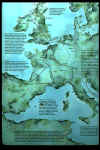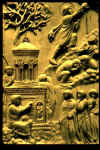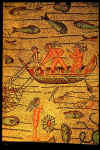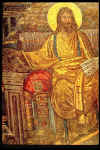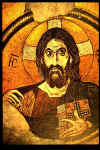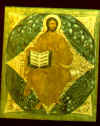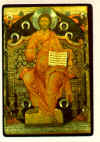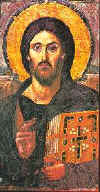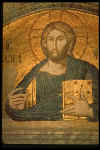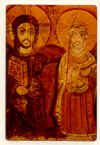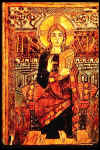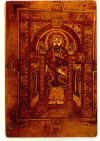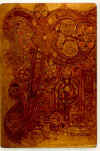Patristic Age Key Events
(This color denotes secular events)
(As this page is develop, some of
these events will have links to on-line resources.)
c107 Ignatius of Antioch martyred
150 Justin Martyr’s First Apology
172 Montanist
Movement begins
180 Irenaeus writes Against Heresies
196 Tertullian begins writing
230 Earliest known public churches built
248 Cyprian elected bishop of Carthage
250 Decius orders empire-wide persecution
270 Anthony takes up life of solitude
303 Diocletian begins “Great Persecution” and
abdicates in 305
312 Constantine wins battle of Milvian Bridge
313 Constantine's Edict of Milan
Donatist Schism begins
325 Council of Nicea
328 Constantinople founded
358 Basil the Great founds monastic community
367 Athanasius’ Letter defines the New Testament
Canon
379- 395 Reign of Emperor
Theodosius I (the Great). Defeated and pacified the Goths;
founded the orthodox Christian State; Arianism and other heresies
outlawed, Pagan sacrifice forbidden, paganism restrained. After his
death the Empire was divided East and West for his sons.
381 Christianity made state religion
386 Augustine's conversion; [born 354, died 430]
395 Empire divided between East and
West for Theodorius' sons.
405 Jerome Complete Vulgate
410 ALARIC'S VISIGOTHS SACK ROME;
Roman troops leave Britain, leaving it open to invasion from Germany and
Scandinavia
410 Augustine writes City of God
431 Council of Ephesus. Called by
Theodosius II to settle the Nestorian controversy.
432 Patrick begins mission to Ireland
440-461 Leo I, Bishop of Rome
451 Council of Chalcedon reverses Ephesus
527-565 Emperor Justinian
(The Justinian Age) reconquers Italy and North Africa; issues the
Justinian Code of Roman law, a revision of Theodosius' Code.
540 Benedict Writes Monastic Rule
563 Columba starts mission community in Iona
590-604 Gregory I (the Great) Bishop
of Rome
597 Augustine, sent by Gregory I, converts Saxon king
of Kent (England)
622 Muhammad’s Hegira
(flight to Medina), birth or Islam
638-56 Arabs (Islam) conquer
Palestine, Iraq, Syria, Egypt
664 Celtic and Roman churches joined at Council of
Whitby in England
711-16 Arabs (Islam) conquer
Spain
719-754 Boniface's mission to Germans
726-843 Iconoclast Controversy in Eastern Church
732 BATTLE OF TOURS, Arabs
driven back from France by Charles Martel
737 2nd Council of Nicea settles Icon
controversy; resistance continues to 843
800 Charlemagne crowned Holy Roman
Emperor in Rome
